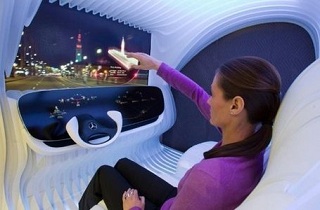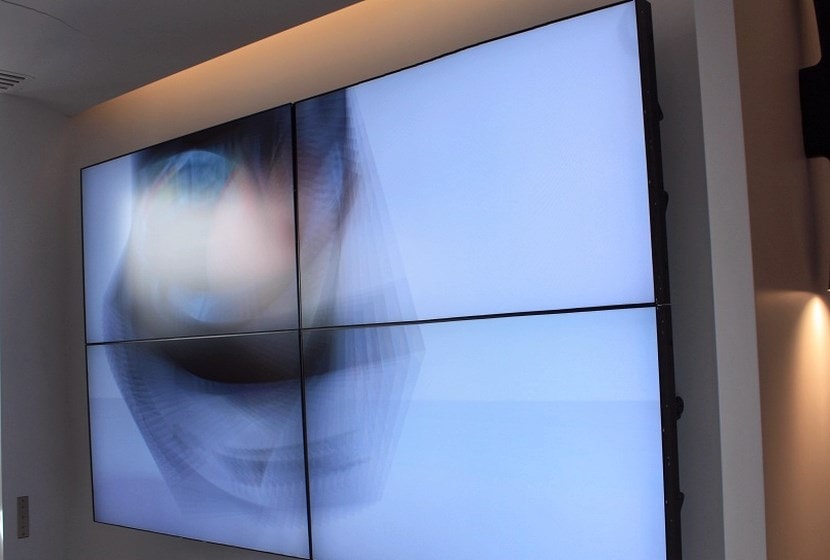"I am wary of the contagion of machines" said Georges Duhamel. Or again, Isaac Asimov: "the robots will free us". So what should we think?
Without us realizing it, we are really changing the world with robots driven by thought or the generalization of Big Data opening up to predictive analysis. We can be alarmed by this or find, on the contrary, that we are accessing a new dimension of reflexivity and of our being in the world, transforming our daily life and, first and foremost, work itself.
Patrice Zanain his little book. 50 innovations for tomorrow " (Editions Alternatiives - 2010) presents the latest research in this field, with the perspective: 2020.
"Piloting a robot thanks to signals emitted by the brain of a person 1500 km away is the performance recently achieved by researchers at theGeneva Universitys, Geneviève University Hospitals and theUniversity of Coimbra in Portugal.
To carry out the demonstration, the experimenter, located in Geneva, wore a helmet equipped with eight electroencephalogram sensors that recorded the signals emitted by the visual cortex. He was placed in front of a screen on which appeared luminous squares each flashing at a different frequency. Each square was associated with a possible movement of the robot.
When the experimenter looked at one, his brain emitted pulses of the same frequency. Sensors collected these signals, which were then translated into commands sent to the robot, which was in Coimbra. The response time of this system was half a second.
In addition, the Rajesh Raoat theWashington University...has succeeded in creating an interface that allows a robot to be controlled by thought. Rao's work has several features that deserve attention.
First of all, the experimenter controls a robot, not a computer program. The technique used to retrieve brain signals is non-invasive. Indeed, each signal must first be "noisy" to control the robot. This implies that the machine can only obtain signals indirectly, using sensors located on the surface of the head, and not where they are generated, inside the brain.
Therefore, the robot must be autonomous enough to perform the task. In addition, it requires a high degree of mental concentration.
On the other hand, in Japan, there are already HRP-3Pa 1.60-metre humanoid robot, presented by the company Kawada, which can be remotely controlled to perform pre-programmed tasks in a dangerous or hostile environment (according to its designers, it can even walk on ice). It is probably one of the most advanced robots in the world. »
Human beings may be a genius of adaptability, but they are not made to live in all environments. Unfortunately, some jobs need to be done, and the conditions of atmosphere or temperature are not a sinecure. So it seems that the Japanese have found a very interesting solution to this problem.
For its part, the Korean laboratory KAIST AIM works on human/robot interaction. His robot Amio is able to analyze voice intonation and facial expressions to determine human emotions and adapt behaviour accordingly. For example, if he thinks you are angry, he will joke to lighten the mood.
But today was born Hoap-3...the last of the robots, driven by thought. Its creators, researchers from the Montpellier II-CNRS Laboratory of Computer Science, Robotics and Microelectronics, have attempted an unprecedented experiment by placing it under the control of the mind of a man located at the Weizmann Institute...in Israel, thousands of miles away. Hoap-3 is moving forward, going left, right... ...controlled by a man in an MRI chamber. It thinks an active movement of specific areas of the brain; this brain activity is interpreted by software that makes the robot move. Funded by the EU, this research should enable humans to travel the planet from their armchairs...
The commercial offer is accelerating. From there to imagining a thought-driven robot that would go to work for you, do the housework and take down the garbage for you, that's not for a while. But is it by chance that the main advances in humanoid robots are to be found in Japan? In Japan, robots will soon transform the lives of the elderly: Japanese society today is experiencing an inexorable and unprecedented ageing of its population. By 2015, i.e. tomorrow, nearly 6 million Japanese people will need assistance to carry out everyday acts. This concept of assistance covers a wide range of activities and is not limited to physical assistance for the elderly. See RTFlash article / Nanotechnology and robotics on this very subject. Gérard Ayachein his book " The great confusion "(France Europe Edition - 2006), explains this phenomenon: "Japan, detached by its culture and religion from the taboo of the Golem, is not intellectually or ethically limited in the increasingly perfect reproduction of the human being. Accompanying robots, new virtual confidants, are emerging in the research centres of Honda, Mitsubishi and Sony. (…).
 But do we need robots to communicate through thought?
But do we need robots to communicate through thought?
A few weeks ago, another American team, led by Brian Pasley (University of California at Berkeley) has been able to reproduce words by analyzing brain activity in patients using electrodes.
This study was carried out on 15 patients awaiting surgery to treat certain forms of epilepsy. These patients were fitted with headphones incorporating electrodes recording the activity of a zone of the temporal lobe of the cortex specialising in the processing and interpretation of auditory signals. The experimenters read a series of words to the patients while the electrical activity of their neurons was recorded and analysed.
The researchers then used software specially developed for the occasion and capable of recreating by synthesis the "words" extracted from these recordings of cortical activity. Against all expectations, these experiments were able to reproduce the sound heard by the patient and it is possible, in a large number of cases, to recognise the words, although the method is far from perfect.
These impressive advances show that it is now possible to imagine, within 5 to 10 years, the widespread use of reliable interfaces allowing direct control by thought of a large number of devices or appliances, whether it is to open one's house door, turn on the television or computer or to make a precise movement thanks to a robotic artificial limb.
The forthcoming appearance of these "mental commands", alongside voice commands and handwriting recognition, will enable IT to be accessible to all and will lead to a real qualitative leap in the care of sick and disabled people. We can also imagine the progress that such an innovation will enable in many fields: in surgery, for example, a robot driven by thought could achieve great feats. In the field of transport, we can imagine that certain specific functions, linked to emergencies, could be directly triggered by thought. Finally, in the field of telecommunications, it would become possible to send simple messages, oral or written, directly from our thoughts!
The giants of electronics and information technology have fully understood the immense economic and industrial stakes of this new mode of action on our environment, but it is not certain that governments and our fellow citizens are fully aware of the human, social and moral impact of such a technological advance. Shouldn't we start thinking about "neuroethics", as it was called a few years ago René TrégouëtFounder of the Senate Foresight Group, to protect everyone's privacy and freedom?
See in the Upside Down section, the revised definition from "Robots".
{Jacuzzi on}











